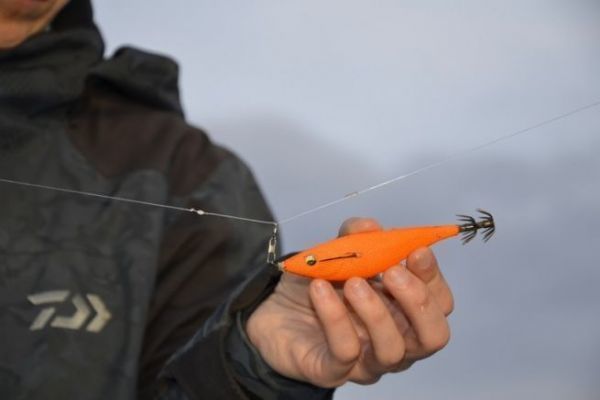A question of balance
When fishing tataki, the presentation of your jig on the rig is one of the most important factors affecting the number of hits. Ideally, your jig should be perfectly horizontal and suspended. This allows the animation to be more effective, undulating the jigs up and down like a wounded prey. It also prevents the quill-filled baskets from becoming tangled in the line body, rendering them completely ineffective. A well-presented jig will be more likely to trigger bites, while ensuring that the cephalopod bites properly and doesn't become unhooked on the way up.
Jigs to avoid, which tend to sink, are easily identified by the size of the baskets, which are far too big or thick for the size of the jig. This weight and tendency to sink drastically increase the chances of hooking.

With or without ball
Among the various jigs available on the market, some models feature beads whose high-pitched sound is easily recognizable. The frequency of this sound is considered the most effective for triggering aggressive reactions from cephalopods, as fish also do on lures. However, when fishing tataki, 2, 3 or even 4 jigs are frequently used on the same rig and having as many jigs with beads is counterproductive.
The aim of the beads is to give the squid a chance to spot our jigs from a distance, then give it the choice of grabbing the one it likes from among several options. It's therefore important to pair noisy jigs with silent jigs to increase our chances of triggering bites during fishing action.

Variable size
Cephalopods generally move along the coast and are very opportunistic about the type of prey they will eat. A tataki rig should ideally be made up of jigs of different sizes and shapes, again to find what works at a particular time. Commercially available sizes are often 5, 8, 10 and 12 cm, all of which can work, whether targeting small or large individuals.
Jigs also come in a variety of textures, some with cloth, others totally smooth and there are even soft jigs, a bit like a soft lure.










